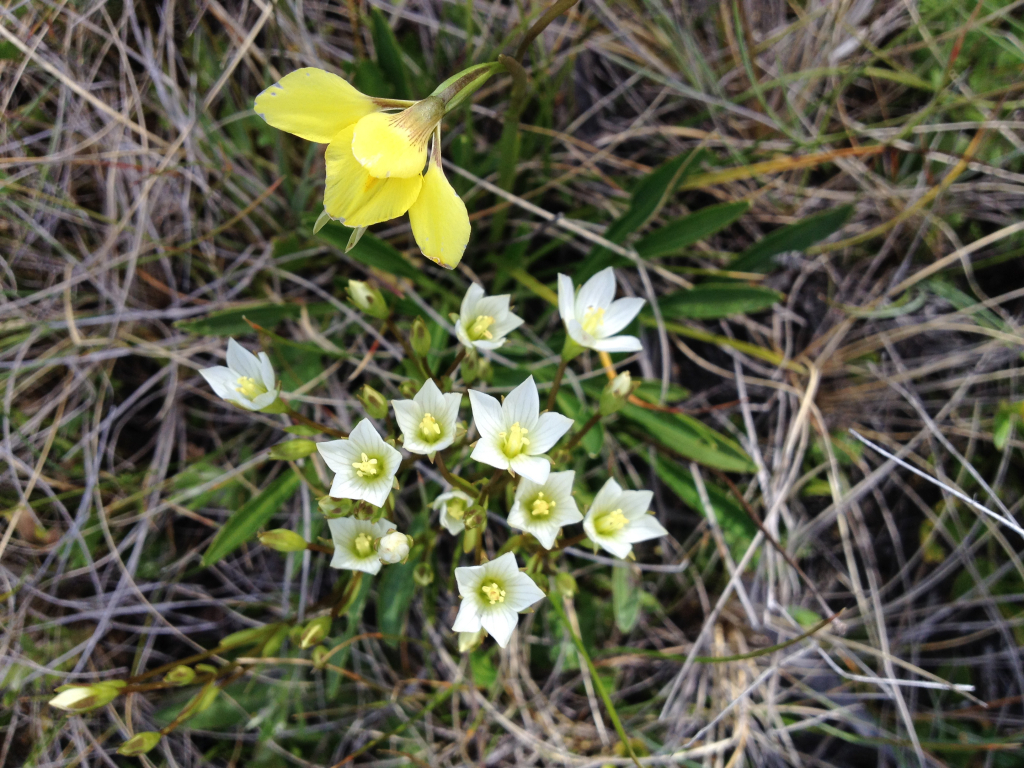Gentianella polysperes
(L.G.Adams) GlennyPlants annual or biennial, usually flowering once (monocarpic); stems c. 10–35 cm high, usually with several, often widely spreading branches (often candelabrum-like); stem-base remaining slender. Basal leaves oblanceolate to spathulate, petiolate, 2–4 cm long, 5–10 mm wide, obtuse to subacute; stem leaves narrow-oblanceolate, sessile to shortly petiolate, 1.5–3 cm long, 3–7 mm wide. Terminal partial inflorescence (1–)5–7(–9)-flowered; pedicels (1–)2–4(–7) cm long, up to 0.8 mm diam. when fresh; calyx-lobes subulate, 5–7(–9) mm long, acute, margins smooth to minutely papillose-serrate; corolla white or cream, veins grey to violet or inconspicuous, tube c. 4 mm long, lobes to 9 mm long; anthers c. 1.5 mm long; ovary c. 8 mm long. Capsule to c. 20 mm long. Flowers Sep.–Dec.(–Jan.).
Wim, VVP, GipP, CVU, EGL, EGU, HSF, HNF, MonT, HFE, VAlp. Also NSW, ACT, Tas. Scattered through the State, usually in hilly country, e.g. Dandenong Ranges and foothills, Mt Sugarloaf, Mt Macedon (but apparently now rare at these localities), ascending to subalpine areas (e.g. Snowy Range, Mt Benambra, Mt Delusion) in the eastern ranges. Supposedly also collected from the Curdies River near Warnambool. Commonly occurring in light forest or woodland communities.
Walsh, N.G. (1999). Gentianaceae. In: Walsh, N.G.; Entwisle, T.J., Flora of Victoria Vol. 4, Cornaceae to Asteraceae, pp. 310–321. Inkata Press, Melbourne.
 Spinning
Spinning

